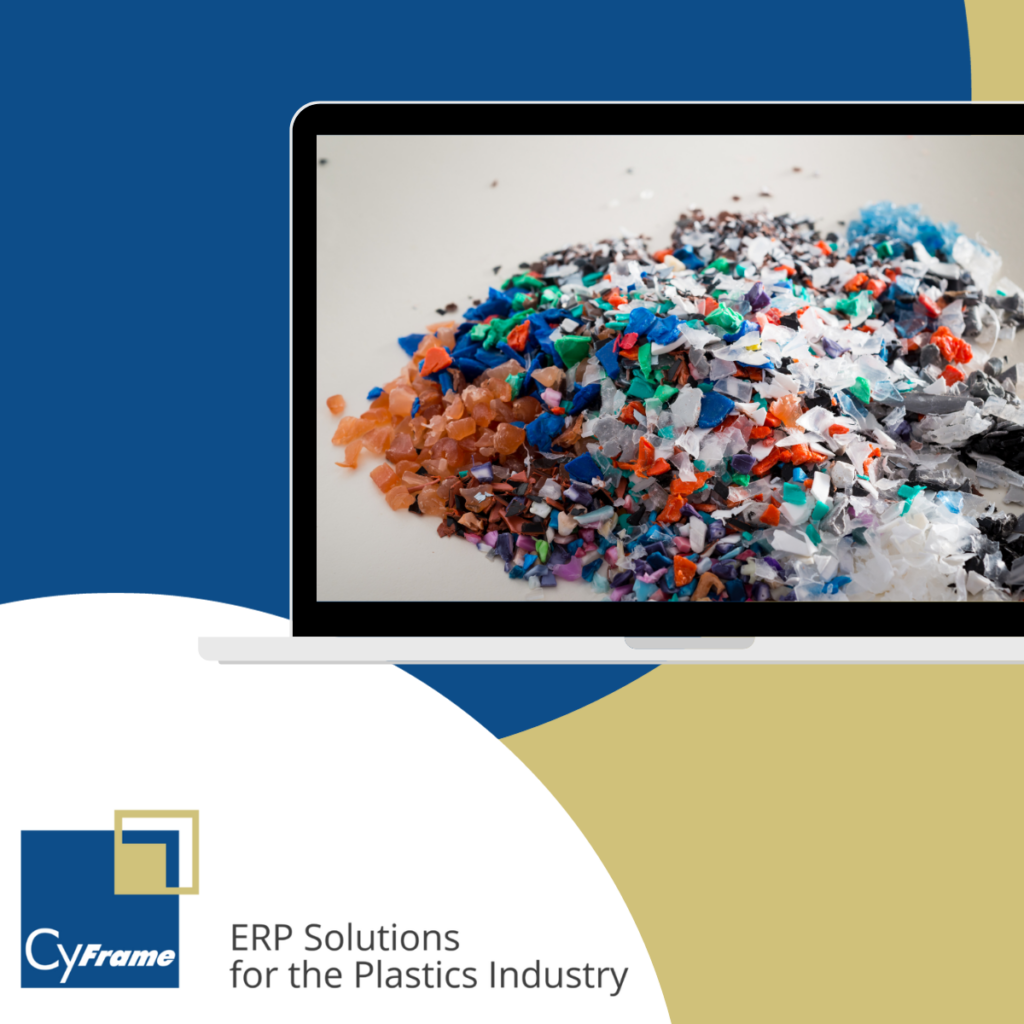The generation and reprocessing of regrind is a vital aspect for many plastics processors, and the ability to handle it properly must be a crucial factor when evaluating an ERP system. Plastic processors face various complexities related to regrind such as its reclassification and identifying when and where it can be used, and a robust ERP system must address these challenges to avoid unnecessary costs and expenses. From accurate Material Requirement Planning (MRP) calculations to managing different grades of regrind and correlating rejected parts to regrind raw material numbers, an ERP system designed specifically for plastic processors efficiently handles these intricacies. In this article, we will explore the complexities of regrind processing for ERP systems and emphasize the importance of addressing them to ensure accounting accuracy and avoid financial surprises.
Accurate MRP Calculations for Regrind Intake
Scrap is inherently generated as part of the production process, and is often reground as reprocessed raw material that requires special consideration when calculating for Material Requirement Planning or MRP.. A granulator is installed to vacuum feed regrind back into the machine’s hopper. Without accurate MRP calculations that consider regrind intake, the inventory planning would be inaccurate. An ERP system designed for plastic processors efficiently handles these calculations, ensuring accurate MRP and inventory management.
Complexities of Regrind Usage in Plastic Recipes
Using regrind in single or multiple-layer plastic recipes introduces further complexities. Processors must determine the appropriate quantity of regrind to be sourced from inventory versus that produced on the production line. Again, accurate MRP calculations are essential to ensure the availability of the correct amount of regrind. An ERP system tailored for plastic processors can effectively handle these complexities, optimizing the usage of regrind in plastic recipes and ensuring accurate inventory management.
Managing Different Grades of Regrind
Plastic parts made with regrind that have been re-processed multiple times will degrade and lose some of their virgin properties. To compensate for this, additives are often required to restore the desired properties. This necessitates the use of a alternative materials (recipes). An ERP system designed for plastic processors understands the need to manage different grades of regrind and supports the inclusion of additives in the recipe. By accurately managing regrind grades, processors can maintain the desired product quality while optimizing the use of regrind materials.
Correlating Regrind to Original Plastic Recipe
Correlating regrind to the original plastic recipe is essential for effective quality control and for material certification. When rejected parts are generated, the ERP system should automatically associate them with the corresponding regrind raw material lot number. This correlation ensures that rejected parts can be properly tracked and accounted for, enabling efficient quality control processes. An ERP system built for plastic processors incorporates this native functionality, streamlining quality control and traceability automatically and with a greatly improved degree of accuracy..
Accounting Accuracy and Inventory Management
The efficient handling of the regrind process and accurate MRP calculations have a direct impact on accounting accuracy and inventory management. Inaccurate inventories can lead to financial surprises during physical counts, creating accounting discrepancies and disrupting financial operations. By using an ERP system specifically designed for plastic processors, these complex regrind processing issues can be effectively managed, ensuring accounting accuracy and avoiding unexpected inventory discrepancies.
Conclusion
Regrind processing poses significant complexities for plastic processors, and it is crucial to address them effectively within an ERP system. From accurate MRP calculations to managing different grades of regrind and correlating regrind to original plastic recipes, an ERP system tailored for plastic processors efficiently handles these intricacies. By implementing a robust ERP system, plastic processors can optimize regrind processes, achieve accounting accuracy, and avoid financial surprises during physical inventory counts. The ability to effectively manage regrind processing is a testament to the importance of using an ERP system designed specifically for the unique needs of the plastic manufacturing industry.

